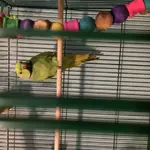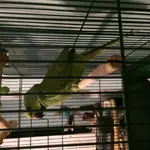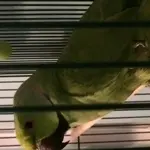I rescued a IRN the other day and I was told by the rescuers that it was a baby... but after just a few minutes of research it is CLEARLY not. Maybe they meant it was young?
I am not home to take a picture yet, but I can do my best to describe him.
His beak is a dark red with a pretty large amount of black near the bottom of it. I can't remember if the ring goes all the way around, but his front neck area is fully black. He has orange circles around his eyes and his feet are pretty light colored. His tail is very very short and his body is really small (a bit smaller than cockatiel sized). This is all I can remember.
I know the ring indicates that they are about 1 1/2 to 2 years old! If he is this old how likely am I to tame him?
I am not home to take a picture yet, but I can do my best to describe him.
His beak is a dark red with a pretty large amount of black near the bottom of it. I can't remember if the ring goes all the way around, but his front neck area is fully black. He has orange circles around his eyes and his feet are pretty light colored. His tail is very very short and his body is really small (a bit smaller than cockatiel sized). This is all I can remember.
I know the ring indicates that they are about 1 1/2 to 2 years old! If he is this old how likely am I to tame him?




